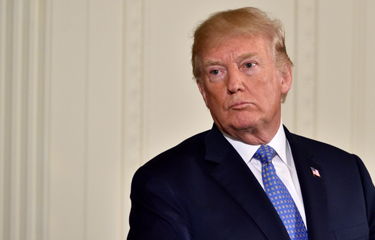A move executed Tuesday, 13 August by the Trump administration will reverse previously-announced tariffs on some seafood processed in China.
Included in the original list of items subject to the latest round of tariffs announced by U.S. President Donald Trump on Thursday, 1 August – which originally proposed subjecting an additional USD 300 billion (EUR 270 billion) in imported goods to a 10 percent tariff – were frozen fillets of cod, salmon, and haddock.
But a revised list of goods subject to tariffs released today by Office of the U.S. Trade Representative excluded those items. Additionally, frozen and chilled Alaska pollock fillets earned a reprieve from the tariffs through 15 December, 2019, as they landed on a special list created by the USTR that was intended to shield U.S. businesses from tariffs through the Christmas season.
Certain products are being removed from the tariff list based on health, safety, national security and other factors and will not face additional tariffs of 10 percent,” the USTR office said in its 13 August announcement. “Further, as part of USTR’s public comment and hearing process, it was determined that the tariff should be delayed to 15 December for certain articles. Products in this group include, for example, cell phones, laptop computers, video game consoles, certain toys, computer monitors, and certain items of footwear and clothing.”
The new round of tariffs in the escalating trade war between the U.S. and China will still go into effect 1 September, as planned, with the USTR publishing a revised, 121-page list of items being added to the nearly USD 200 billion (EUR 170 billion) worth of Chinese goods already subject to tariffs ranging from 10 percent to 25 percent. A litany of seafood items, including many categories of shrimp, tilapia, salmon, pollock, tuna, flatfish, crab, scallops, squid, and fishmeal, were slapped with 10 percent tariffs in July 2018.
Gavin Gibbons, a spokesman for the U.S. seafood sector’s trade association, the National Fisheries Institute, said at the time his organization was not aware of how the USTR arrived at its decision for what seafood items were included or excluded from the list of items subject to tariffs.
“We have not been given any indication as to why some made it and some did not,” he told Quartz.
U.S. politicians from Maine to Alaska have pushed for seafood products from their state or region to be excluded from the tariffs, with mixed success.
The trade war cost U.S. seafood exporters an estimated USD 331 million (EUR 296.1 million) in 2018, the result of a 36 percent drop in the United States’ seafood sales.
Photo courtesy of







